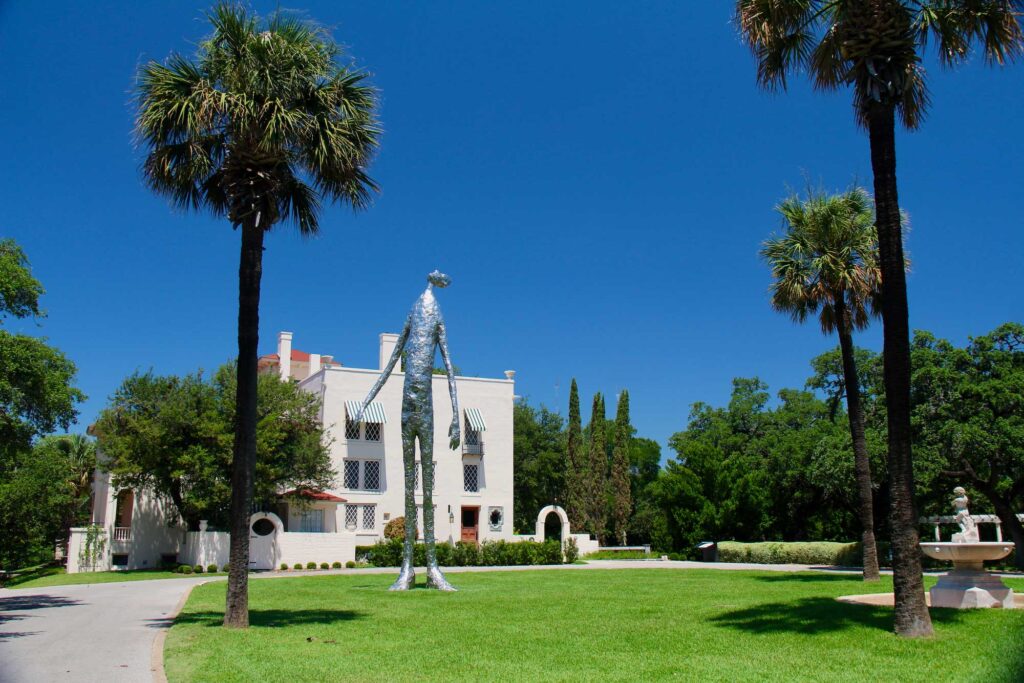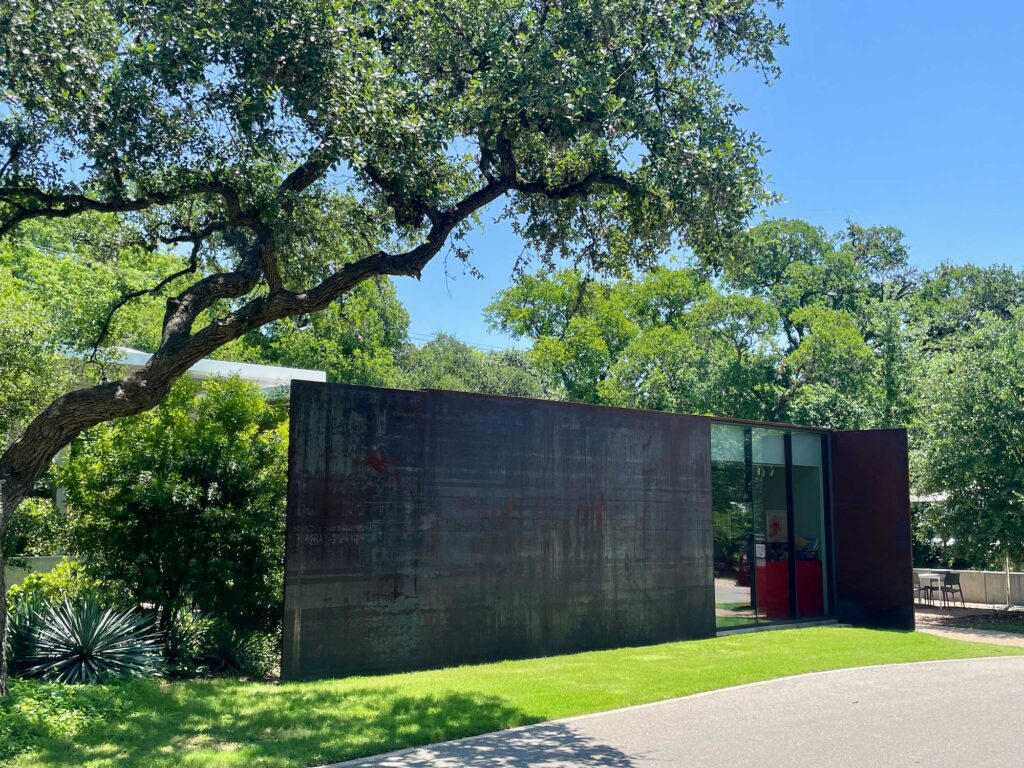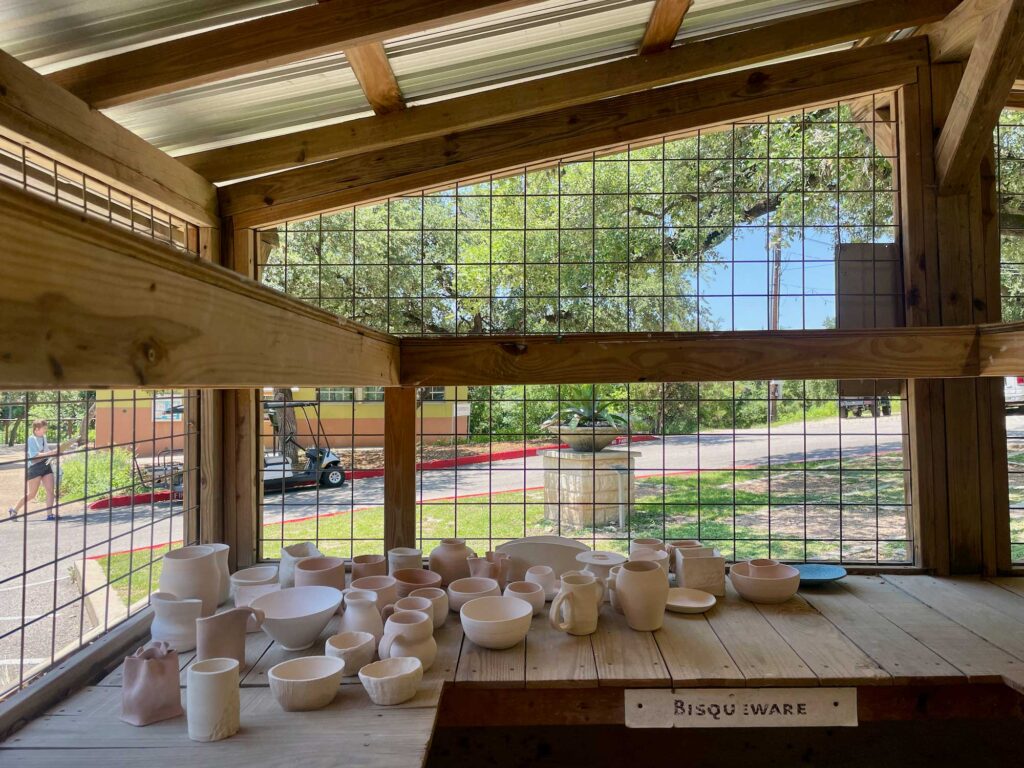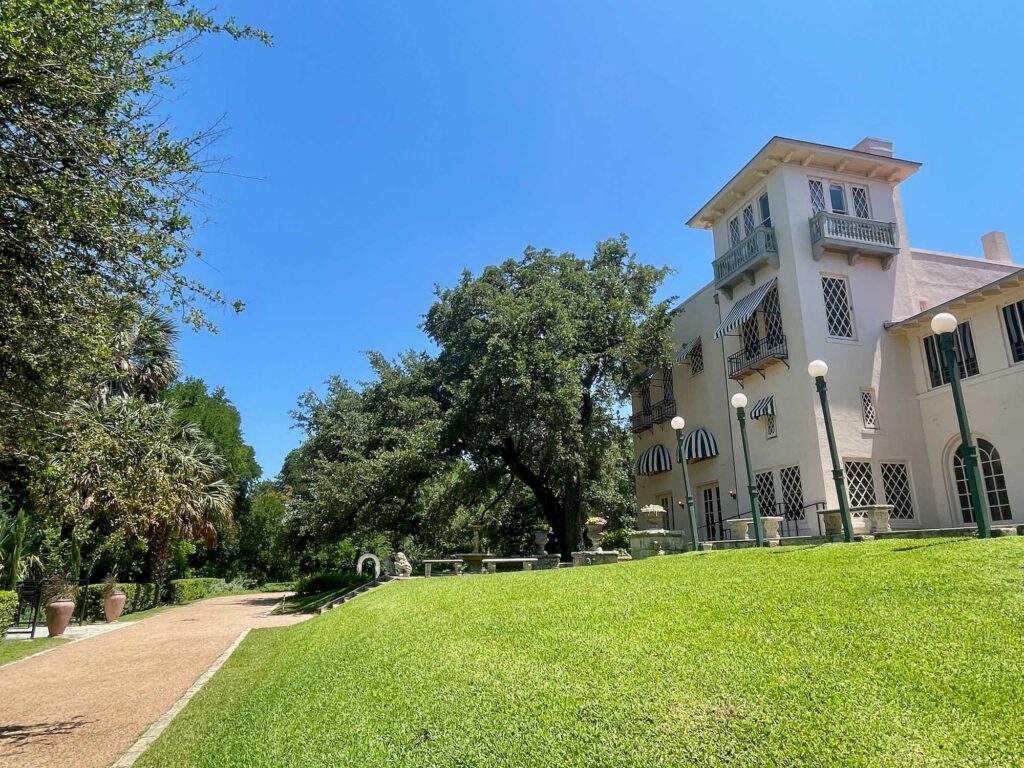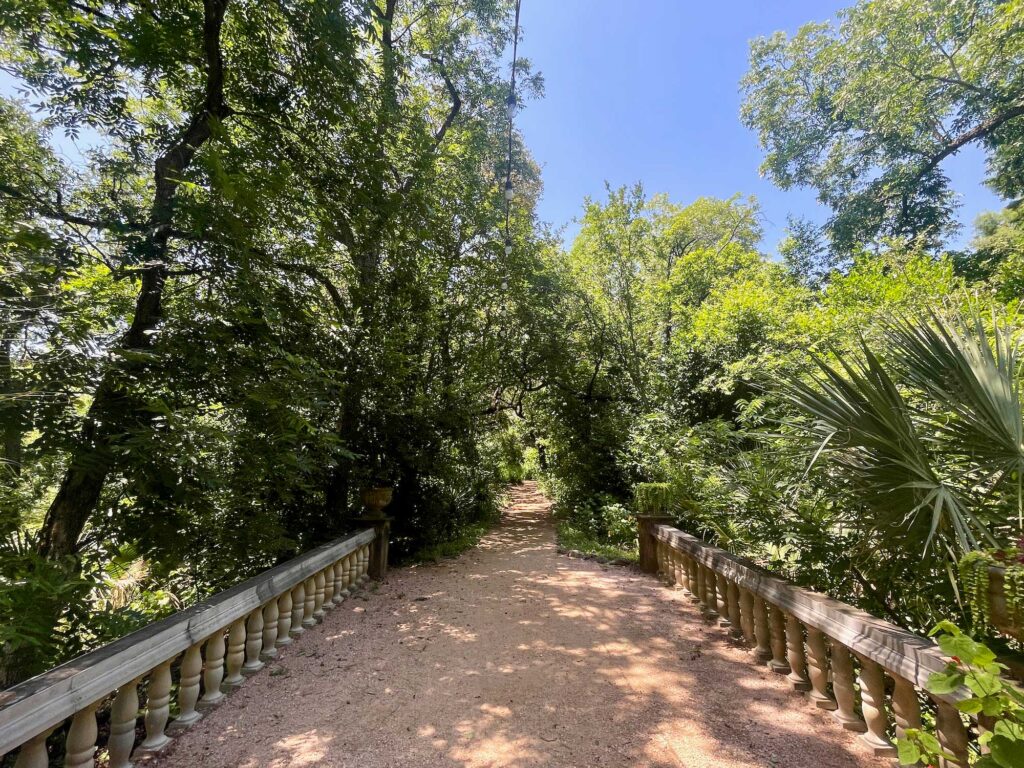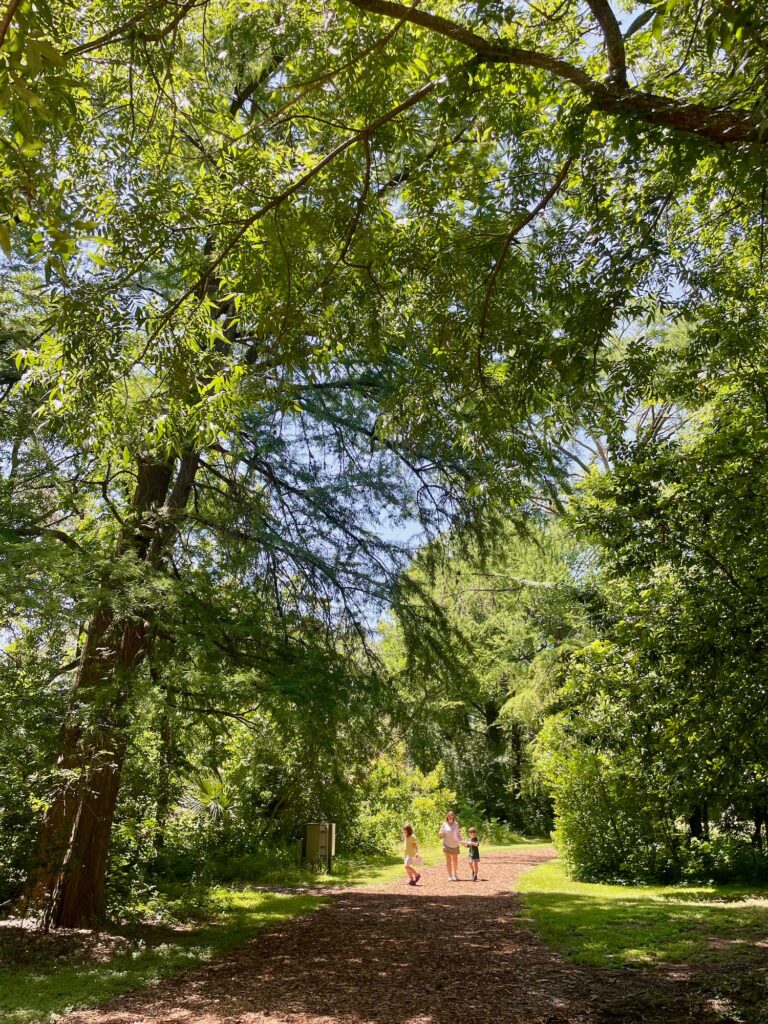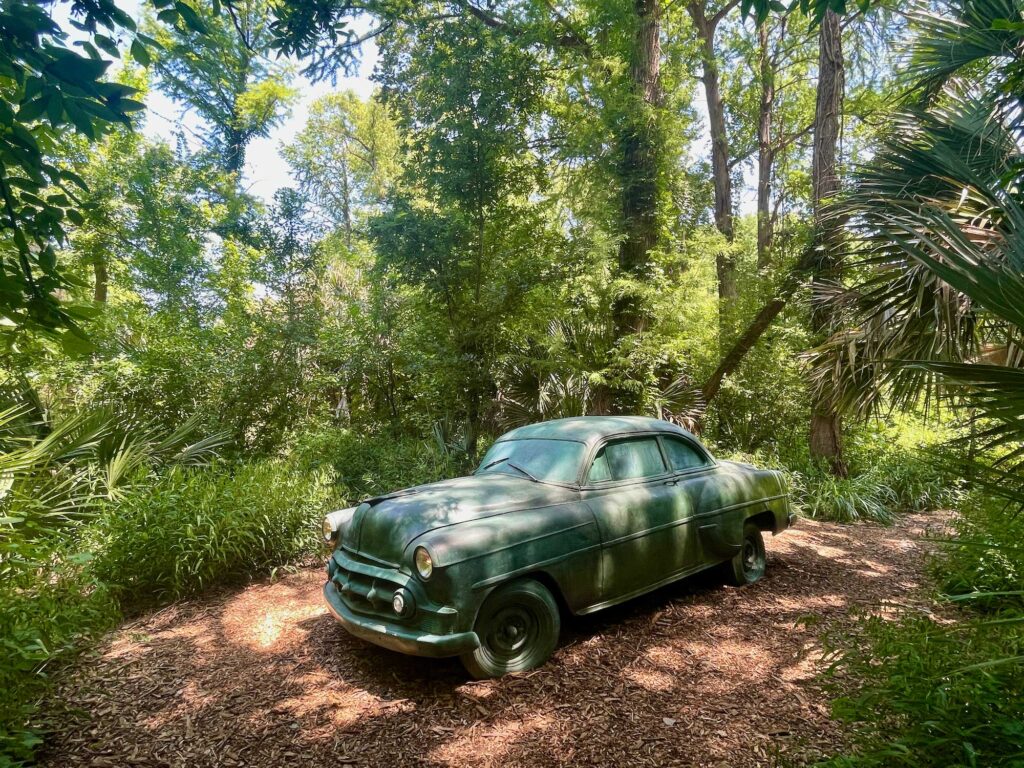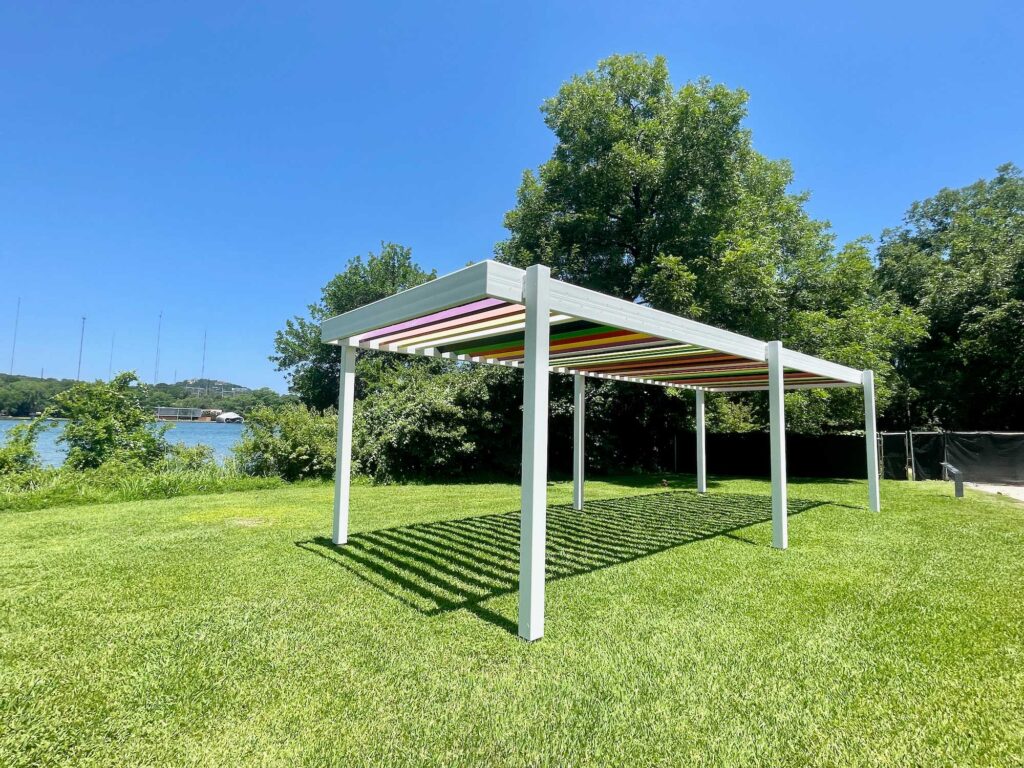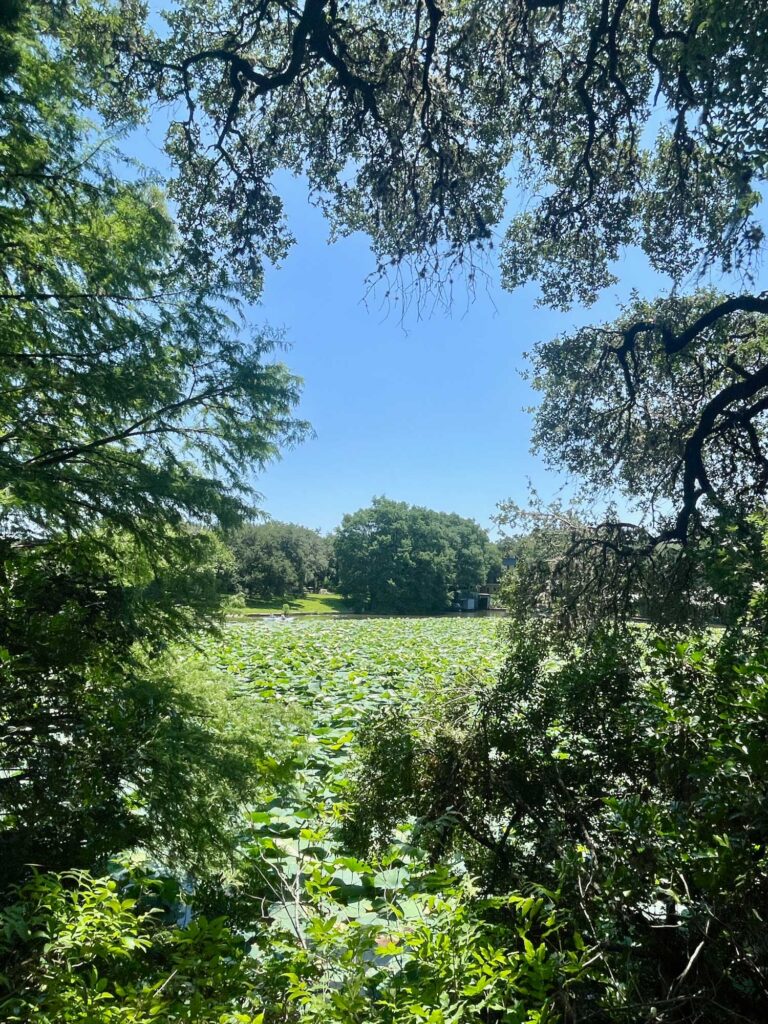- Built:
- 1916
- Alterations:
- 1933-1996, 2015, 2017
- Architect:
- Harvey L. Page (1933), Trahan Architects (2017)
- Landscape:
- Reed Hilderbrand (2015)
- Style:
- Eclectic, Mediterranean Revival, Contemporary
- Historic Status:
- Austin Landmark
Description
Perched on a lush Lake Austin peninsula, The Contemporary Austin at Laguna Gloria is a grand historic estate that has been converted into a modern art complex. The 18-acre campus features an art school, amphitheater, sculpture gardens, cafe, and gallery spaces all centered around a romantic Mediterranean villa with a Classical garden. Recently, an extensive landscape renovation—including a series of steel-clad pavilions—has brought a contemporary edge to Laguna Gloria. Today the museum hosts world-class visual artists and delights visitors with its dynamic blend of classical and modern aesthetics.
Placemaking
Located five miles west of downtown at the base of Mount Bonnell’s limestone cliffs, Laguna Gloria sits on a lush hillside bordered by Lake Austin and a shady inlet lagoon. The natural beauty of this landscape attracted socialites Hal Sevier and Clara Driscoll to build a grand estate here in 1916. Driscoll was a cattle heiress who had traveled extensively in Europe and spent her honeymoon at Lake Como in Italy; upon settling in Austin, she sought to create a Texas version of elegant architecture she had admired during her travels. The heiress had an avid interest in landscape design, and oversaw the development of a sprawling estate that she named Laguna Gloria, Italian for “Heavenly Lagoon.”
The three-story white stucco villa at the center of Laguna Gloria was designed by San Antonio architect Harvey L. Page. The design embraces the natural beauty of the site with large windows opening onto terraced patios, lacy balconies, and a lookout tower that rises up four stories to dominate the surrounding landscape. The architecture is an idiosyncratic blend of Mediterranean and regional styles—one window is a replica of the rose window at the Mission San José in San Antonio. Driscoll also incorporated several antiques from Europe and relics from Texas history, including a wishing well imported from Italy and wrought-iron gates originally used to keep cattle off the lawn of the Texas State Capitol. Driscoll was a socialite, arts patron, and politician; her villa provided the perfect setting for hosting elite gatherings and entertaining visiting dignitaries.
In 1943, Driscoll donated Laguna Gloria to the Texas Fine Arts Association to be used as a museum. The art school opened in 1961, and an industrial-style 5,300-square-foot facility was built for the growing school in 1983. The museum’s ownership and direction has changed throughout the decades: first it was The Laguna Gloria Museum, then the Austin Museum of Art, and now The Contemporary Austin. Because the historic villa lacks suitable space for an extensive gallery, it is currently used for offices and as an event space (popular for weddings).
In 2015, landscape architects Reed Hilderbrand designed the Betty and Edward Marcus Sculpture Park, which makes use of both the formal historic gardens and the wild wooded areas along the lakefront. The sculpture garden features large-scale contemporary art mixed among Driscoll’s Italian follies.
Most recently, the museum underwent a significant expansion with a new entrance pavilion designed by Trahan Architects. The addition brought a cafe, gift shop, restrooms, and new gallery space to the grounds. Clad primarily in weathering steel, the 7,250-square-foot pavilion consists of a series of crisp sculptural boxes arranged around an exterior pathway leading to the gardens. The procession blends the new architecture into the landscape and serves as a dramatic entrance to the museum grounds.
Today, Laguna Gloria attracts world-class artists, but it does not feel like a bland international museum. There is a strong sense of local ownership and participation; the amphitheater, art school, and events space bring great swaths of the Austin community through the grounds every year. At the same time, the combination of abundant natural beauty, unique architecture, and art-in-nature ethos have made Laguna Gloria a center of Austin’s cultural scene for more than a century. – Sadi Brewton, AIA
Bud Franck
